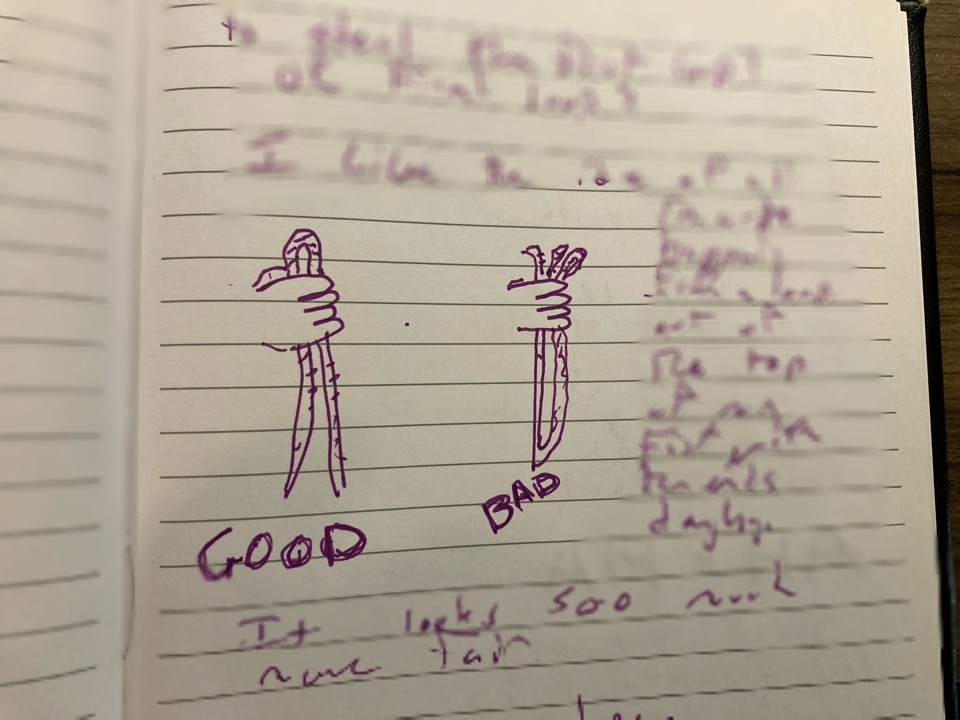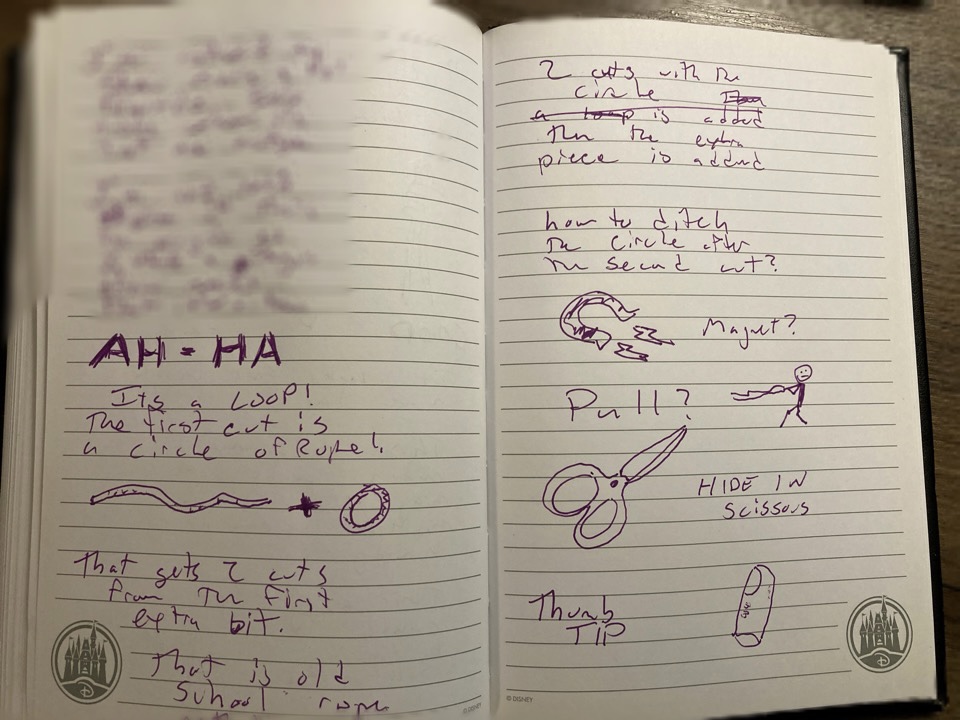Last week I bought some rope on a whim and started playing with cut and restored rope in my show. I used to do this a long time ago when I was starting out in comedy clubs. Technically my routine was a mix of Steve Bedwell‘s and Michael Finney‘s routines. It worked well at the time and served its purpose, but I really haven’t done cut and restored rope in the show in a 15+ years.
I’m having fun with the trick, and pretty much doing it how I used to do it. However, for me to do it in the show, I need to contribute something to the trick. One thing I did today was start to come up with conditions for the routine. The first condition is that I want all of the cuts to happen with the middle of the rope sticking out of the hand and the ends dangling:

I think this is a much more natural and fairer looking way to hold the rope than the standard method where you switch the end for the middle.
Then with further writing I hit on another idea (from the past!)

Using a circle of rope instead of an extra length of rope will allow me to get two cuts without having to add any rope and both cuts can be done from the desired hand position!
The next challenge is figuring out how to get rid of the circle of rope once it’s been cut twice and is two pieces of rope. Once I solve that, I need to start doing some writing on what to say!
-Louie
PS. You’ll notice I have drawing in my notebook. I’m using drawing more and more. I highly recommend getting the book Sketch Notes, it really helped me learn to add drawings.
